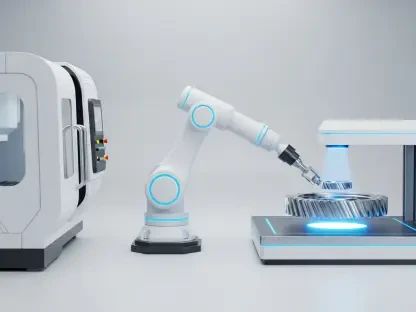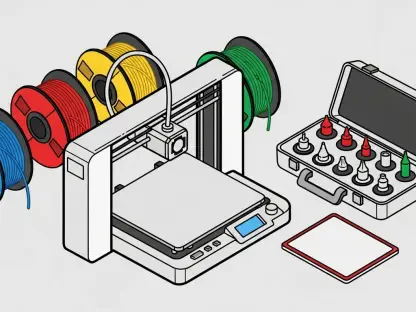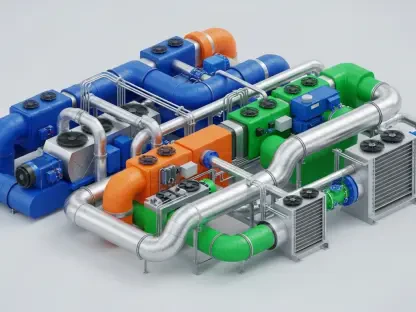In an era defined by rapid technological advancement, digital manufacturing software stands out as a pivotal component driving the evolution of Industry 4.0. As traditional manufacturing processes shift toward digital ecosystems, manufacturers across diverse sectors are leveraging these sophisticated solutions to enhance operational efficiency and streamline production pipelines. Projections signal robust growth for this market, anticipated to reach USD 7.51 billion by 2032 with a compound annual growth rate (CAGR) of 14.79% from 2025 to 2032. This transformation is ushered in by the integration of cutting-edge technologies like artificial intelligence (AI), the Internet of Things (IoT), and digital twins, which collectively enhance decision-making processes, reduce production times, and elevate product quality.
Transforming the Manufacturing Landscape with Technology
Streamlining Operations through Data Insights
Digital manufacturing software plays an integral role in facilitating seamless operations by harnessing the power of data analytics and system integration. With sectors moving toward heightened automation, the ability to leverage real-time data and insights becomes indispensable for manufacturers seeking to adapt and optimize their operations. The drive for efficiency is powered by AI, enabling systems to self-correct and learn from historical data while minimizing human error. IoT contributes by interlinking machines and processes, providing a real-time overview of the manufacturing environment, which aids in proactive maintenance and instantaneous response to issues.
Additionally, digital twins emerge as a transformative force by creating virtual replicas of physical assets, allowing for the simulation of various processes in a risk-free digital space. This innovative approach enables manufacturers to predict outcomes, optimize resource usage, and tailor productions more precisely to meet consumer demands. Consequently, industries experience a reduction in material waste, an enhancement in energy efficiency, and an overall improvement in production agility. The convergence of these technologies forms a robust framework for smart manufacturing, elevating traditional methodologies to new heights.
Navigating Market Segmentation Dynamics
Diving deeper into the market’s anatomy, segmentation reveals a structured overview of its operation and potential. Components of the market comprise various software tools catering to distinct manufacturing phases—from product design to planning, simulation, and eventual execution. Each vertical supports specific stages of product lifecycles, ensuring a connected, smooth workflow from inception to completion. Deployment strategies now largely involve a dichotomy between on-premises and cloud-based solutions. While cloud deployment offers notable advantages in terms of flexibility, scalability, and cost efficiency, the safeguarding of sensitive data inclines some sectors toward on-premises configurations for added control.
Utilization spreads across various applications, including CAD/CAM software, digital twins, simulation tools, and manufacturing execution systems. These segments are instrumental in optimizing manufacturing operations and contribute to digitalizing efforts on the factory floor. The versatility of digital manufacturing software is evident in the diversity of end-user industries it serves, ranging from automotive and aerospace to consumer electronics and healthcare. This extensive applicability underscores the adaptive nature of these tools in meeting the unique requirements of each vertical, supporting industry-specific nuances to drive productivity and profitability.
Key Players and Innovations Steering Market Dynamics
Influence of Leading Corporates
The evolution of the digital manufacturing software market is heavily influenced by prominent companies, each delivering unique innovations and technological advances that reinforce market growth. Firms like Siemens AG, Dassault Systèmes, and PTC Inc. lead the charge in offering comprehensive solutions that bridge design and production processes. Siemens is lauded for its Xcelerator portfolio, especially designed for industrial automation and digitalization to enable large-scale, agile manufacturing. Meanwhile, Dassault Systèmes’ 3DEXPERIENCE platform is a keystone in fostering collaborative product development and ensures digital continuity throughout the production line. Similarly, PTC Inc. champions IoT-enhanced manufacturing through its ThingWorx platform, offering interconnected, intelligent solutions that bolster digital transformation efforts.
Beyond these, Autodesk Inc. and SAP SE make considerable contributions by providing cutting-edge tools for design, simulation, and enterprise resource planning. These platforms empower industries with enhanced insights and operational control, ensuring they can swiftly react to evolving market demands. Each of these companies effectively pushes the boundaries of innovation, influencing industry standards and dictating the pace and breadth of digital adoption within the global market.
Continuous Innovation and Strategic Alliances
A hallmark of the digital manufacturing software sector is its constant evolution, propelled by relentless innovation and strategic partnerships. Companies are persistently investing in and augmenting their offerings by integrating emerging technologies like machine learning and cloud computing to maintain their market competitiveness. Notable developments include Siemens’ rollout of augmented capabilities in its Xcelerator suite, emphasizing open, flexible solutions tailored for comprehensive digital transformation.
Similarly, PTC’s enhancements to Windchill PLM and Kepware focus on ensuring seamless data connectivity and streamlined collaboration across manufacturing platforms. Autodesk’s extension into cloud-based solutions with Fusion 360 aligns seamlessly with industry trends prioritizing AI-powered environments. These advancements not only underscore the sector’s rapid pace of innovation, but they also illustrate the industry’s commitment to fostering environments conducive to the adoption of forward-thinking, cloud-oriented manufacturing solutions.
Market Drivers and Adoption Challenges
Industry 4.0 Initiatives and Sustainability Demands
The ascent of digital manufacturing software is closely tied to global drives toward Industry 4.0, where digital tools are indispensable assets for enhancing productivity and reducing costs. Smart factories, characterized by interconnected systems and real-time data flow, rely on these software solutions for operational transparency and rapid adaptability. Furthermore, growing emphasis on sustainability propels many manufacturers to digitize operations, aiming to decrease waste, optimize resource usage, and amplify energy efficiency. Such demands are buoyed by supportive government initiatives and policies encouraging industrial digitization across major regions.
Despite the evident advantages, the digital shift contends with significant obstacles, namely the high initial costs of software deployment, data security concerns, and the inherent complexity of integrating with legacy systems. These challenges can pose barriers, particularly for small and midsize enterprises lacking the funding or expertise to implement and sustain such solutions fully. Nonetheless, technological advancements and supportive frameworks are counterbalancing these hurdles, promising future advancements in deployment ease and broadening accessibility.
Overcoming Barriers with Technological and Regional Support
To address existing challenges, ongoing developments in AI, IoT, and big data analytics are paving the way for more scalable, cost-effective digital manufacturing platforms. These technologies, combined with concerted government efforts and industry cooperation, are progressively dismantling barriers to adoption. Regions leading the charge, like North America and Europe, offer a blueprint for embracing these technologies through early adoption and robust industrial foundations. The United States features prominently in this landscape as a hub of digital disruption, widely integrating AI and IoT into manufacturing across sectors.
Europe follows suit, with Germany, France, and the UK at the forefront, largely driven by innovative Industry 4.0 applications and initiatives in fields like automotive manufacturing. Meanwhile, the Asia-Pacific region is experiencing significant traction, fueled by rapid industrialization in countries such as China, India, Japan, and South Korea. Local policies enhancing digital infrastructure and domestic manufacturing capabilities, exemplified by China’s “Made in China 2025” strategy, amplify market expansion. Although regions such as Latin America and the Middle East & Africa lag in pace, burgeoning efforts in modernization and international vendor presence are setting the groundwork for future progress.
Future Projections and Strategic Insights for Digital Manufacturing
Technological Integration and Industry Evolution
Looking ahead, the digital manufacturing software market is positioned for a promising trajectory. Emerging technologies like edge computing, blockchain, and 5G are poised to significantly elevate the capabilities of existing systems, enabling rapid data processing and ensuring secure, reliable communications crucial for mission-critical operations. As manufacturing perspectives evolve from reactive to predictive and ultimately autonomous, digital tools will occupy a progressively important role, with real-time decision-making and tailor-made solutions driving industry innovations across the board.
Such advancements will foster increased collaboration between software developers and hardware manufacturers, further diminishing the divide between the physical and digital aspects of production. The trend toward cohesive, end-to-end solutions is expected to gain momentum, as industries seek uninterrupted workflows and seamless integration of systems. To maximize the value of digital transformation efforts, investments in workforce training, change management, and robust cybersecurity frameworks will be vital to safeguard the digital future.
Strategic Opportunities and Challenges Ahead
In conclusion, the future of the digital manufacturing software market glimmers with potential for sustained and substantial growth, spurred by relentless technological innovation and a global shift toward enhanced automation and intelligent manufacturing. While the landscape teems with opportunities for cost savings and enhanced operational efficiencies, companies must navigate challenges like high setup expenses and security imperatives. Yet, those organizations strategically adopting and investing in advanced digital tools are well-poised to thrive in the future industrial landscape. The sustained interest and investment in digital manufacturing provide a testament to the transformative power of technology within the industrial sector, as evidenced by the market’s projected growth and adaptability in an ever-evolving world.









